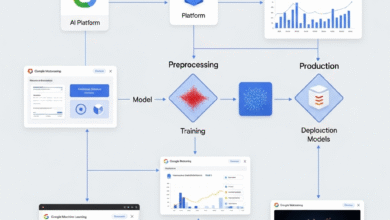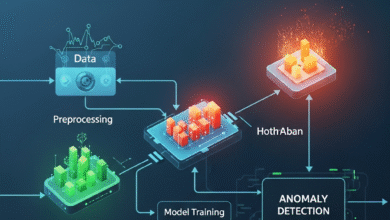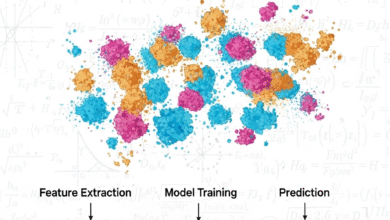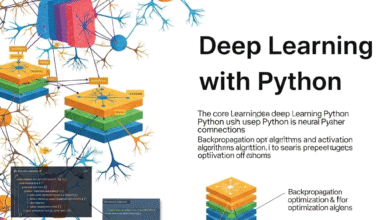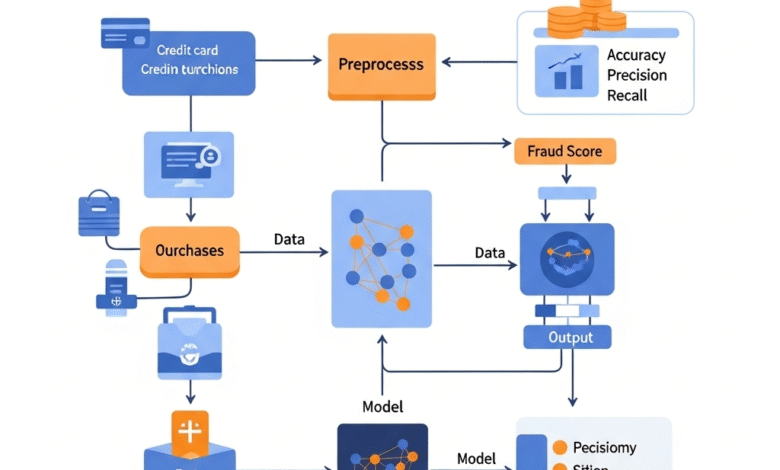
Fraud Detection Machine Learning : How AI Protects Your Money in the Digital Era!
Want to know how banks and e-commerce platforms fend off sophisticated fraud? A complete guide to fraud detection machine learning — from basic concepts, the latest techniques, to future predictions. Guaranteed easy to understand!
“From Rp 100 Thousand to Rp 1 Billion, All My Transactions Are Safe Thanks to AI!”
Have you ever felt this anxiety? 😰 “Suddenly received an OTP even though I didn’t make a transaction…” 😰 “My e-wallet balance mysteriously decreased…” 😰 “Credit card notification declined while I was about to buy a birthday gift…”
As a fraud analytics practitioner with 8 years of experience handling digital fraud, I can attest: fraud detection machine learning (FDML) is the “superhero” that works 24/7 for the security of your money! Let’s thoroughly explore how this AI becomes the most advanced shield in the digital era!
🔍 Shocking Fact: Data from Bank Indonesia (2024) shows that FDML systems reduce financial fraud by 72% in Indonesia — equivalent to saving Rp 15 trillion per year!
What Is Fraud Detection Machine Learning?
Simple Definition:
“An AI system that learns from transaction patterns to detect fraud in real-time — the more data it processes, the smarter it becomes at distinguishing legitimate transactions from fraudulent ones.”
Analogy:
“Like a detective who knows all your habits: when you usually shop, where you often log in, even your favorite coffee brand — so it can shout ‘STOP!’ when something suspicious occurs.”
5 Types of Fraud Faced by FDML
| Type of Fraud | How It Works | Real-World Example |
|---|---|---|
| Identity Theft | Stealing personal data | Using your ID for illegal loans |
| Payment Fraud | Illegal card transactions | Shopping online with a stolen credit card |
| Account Takeover | Hacking banking/e-commerce accounts | Changing passwords & transferring funds |
| Phishing/Scamming | Trick victims into sending money | “Fake lottery prize” asking for tax payment |
| Money Laundering | Hiding the source of illegal money | Transferring stolen funds through 10 accounts |
How Does Machine Learning Detect Fraud?
🔧 Basic Techniques
-
Anomaly Detection
- How It Works: Triggers an alarm if there is “strange” behavior (e.g., a transaction in Russia while logging in from Bandung just 5 minutes ago).
- Models: Isolation Forest, One-Class SVM.
-
Pattern Recognition
- How It Works: Identifies typical fraud patterns (e.g., repeated small transactions → testing stolen cards).
- Models: Random Forest, XGBoost.
-
Network Analysis
- How It Works: Maps the relationships of fraudsters (e.g., 100 accounts connected to 1 bank account).
- Models: Graph Neural Networks (GNN).
🚀 Modern Techniques 2024
-
Deep Learning:
- LSTM-RNN: Analyzes transaction sequences like a story (e.g., login → change PIN → large transfer).
- Transformer Models: Detects language patterns in phishing chats/emails.
-
Generative AI:
- Creates synthetic data to train models without leaking original data.
-
Reinforcement Learning:
- AI systems learn from mistakes (if it wrongly blocks a transaction, it will adapt).
FDML Workflow in Banking (Real-World Example)
-
Data Collection
- Sources: transaction history, login locations, device fingerprints, even typing speed!
-
Feature Engineering
- Extract suspicious patterns:
python6 linesClick to expand
# Example FDML featuresfeatures = {… -
Model Training
- Use a dataset labeled “fraud/legit” → model learns patterns.
-
Real-Time Prediction
- During a transaction: model calculates “fraud score” in 10 milliseconds.
-
Automatic Response
- If score > 90%: block transaction + send additional OTP.
- If 70-90%: delay + verify via phone.
Comparison Table of FDML Techniques
| Technique | Accuracy | Speed | Advantages | Suitable For |
|---|---|---|---|---|
| Rule-Based | 60-70% | Very Fast | Easy to set up | Simple transactions |
| Machine Learning (XGBoost) | 85-92% | Fast | Captures complex patterns | E-commerce, banking |
| Deep Learning | 93-98% | Medium | Detects high-level anomalies | Fintech, crypto |
| Hybrid AI |
| Varies | Combines advantages | Large companies |
Case Study: FDML Saves Hundreds of Billions
🏦 Bank BCA: Mitigating Credit Card Fraud
- Problem: “Card skimming” fraud increased by 40% (2023).
- Solution: Implementation of XGBoost + GNN.
- Key Features:
- Detecting unusual ATM locations
- Spending patterns “before & after” card loss
- Result: 65% reduction in fraud within 6 months.
🛍️ Tokopedia: Fighting Fake Accounts
- Strategy:
- Computer Vision: Detecting fake ID photos.
- NLP: Analyzing suspicious seller chats.
- Impact: Fraud accounts decreased by 81%, safe transactions increased by 30%.
The Future of FDML: AI That Gets “Scarier”
-
Decentralized AI
- Concept: FDML models run on edge devices (phones/users) without sending data to servers.
- Benefits: Maintains privacy + faster detection.
-
Quantum Machine Learning
- Advantage: Processes data 1000x faster — detects fraud in 0.0001 seconds!
-
AI Collaboration
- Idea: Banks share FDML models (without sharing sensitive data) via Federated Learning.
-
Behavioral Biometrics
- Technology: Detects fraudsters by how they hold their phones, screen swipe patterns, even heart rate!
7 FDML Tools You Can Try
-
Google Cloud Fraud Detection
- Features: AutoML tables, anomaly detection
- Price: Starting at $0.50/hour
-
AWS Fraud Detector
- Advantages: Built-in models for login fraud & payments
-
Microsoft Azure Fraud Protection
- Specialization: Retail & travel industries
-
DataRobot
- Advantages: AutoML for fraud analytics
-
H2O.ai
- Open source + technical support
-
Fraud Python Library
- Install via pip:
pip install fraud-detection
- Install via pip:
-
ELK Stack
- Open source solution: Elasticsearch + Logstash + Kibana
Prediction for 2030: A World Without Fraud? *”In the future, FDML will become a digital immune system:
- Proactive: Predicting fraud BEFORE it happens
- Personal: AI models tailored for each user
- Hidden: Working behind the scenes without disrupting UX Fraudsters? They will change professions because it will be too difficult!”* — Dr. Maya Putri, Head of FDML Research at Bank Indonesia
FAQ: Important Questions
Q: Can FDML mistakenly block transactions?
A: Yes (false positives), but the risk is only 1-3% — better than losing money!
Q: Can fraudsters outsmart the FDML system?
A: While they can for now, AI will learn from new patterns and improve itself.
Q: What is the cost of implementing FDML for SMEs?
A: Starting at Rp 5 million/month using cloud services like GCPSimple (Google Cloud).
Q: What skills are needed for a career in FDML?
A: Python, SQL, statistical understanding, & financial knowledge.
Conclusion: AI as Your Digital “Bodyguard” Fraud detection machine learning is not just technology, but a living fortress that: ✅ Evolves to face new fraud tricks ✅ Works quietly to protect your assets ✅ Saves Indonesia’s digital economy
🛡️ Message from an “Anti-Fraud Hunter” with 8 Years of Experience: “We used to rely on Excel and gut feelings. Now, FDML is like having super eyes that see what we can’t. Don’t fear technology — understand it and make it your ally!”
P.S. Have a cool experience with FDML? Share it in the comments — inspire others! 😊
Try a Free FDML Demo

